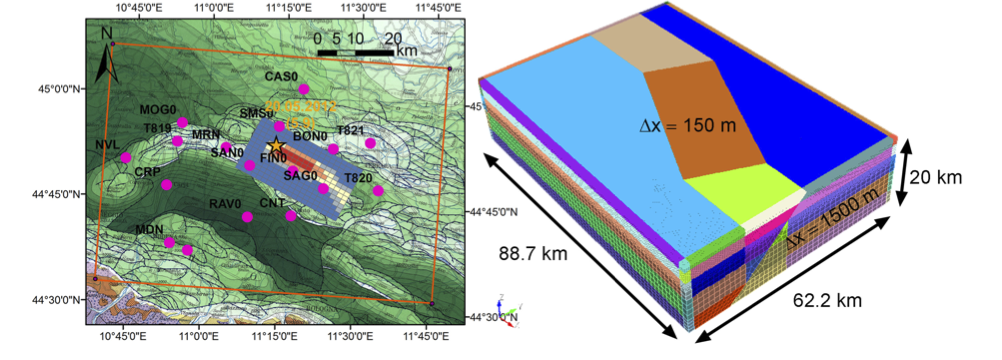Mathematical and numerical modeling can be used to better understand the physics of earthquakes, improve the design of site-specific structures and facilities, and enhance seismic-risk maps.
The reliability of existing tools for earthquake and ground-motion prediction, which are based on empirical relations involving earthquake magnitude, source-to-site distance, fault mechanisms and soil properties, has recently been brought into question. Instead, numerical deterministic simulations have become increasingly popular, mainly because they provide sufficiently accurate and reliable ground-motion predictions to quantify the potential risks from earthquakes. By simulating a number of realistic earthquake scenarios, we can obtain reliable estimates of the severity of seismic events and their possible effects on large urban areas—especially important in cases where we have few historical data—and establish collapse-prevention procedures for strategic structures located in the proximity of a fault.

Three-dimensional model of the Northern Italy earthquake (2012). Fault description (left) and computational domain (right; different colors represent different soil properties).
Prof. Alfio Quarteroni
Modeling and Scientific Computing
SB-SMA-MATHICSE-CMCS
Station 8 – EPFL
CH-1015 Lausanne
Switzerland
